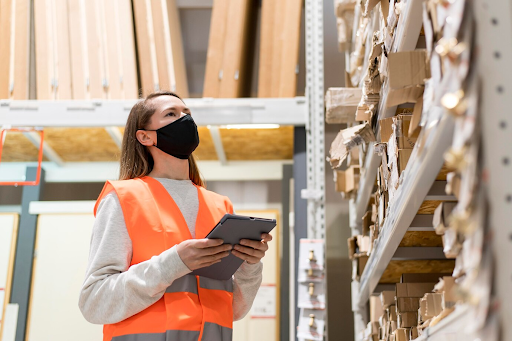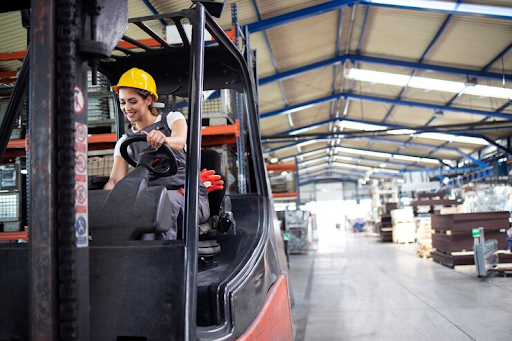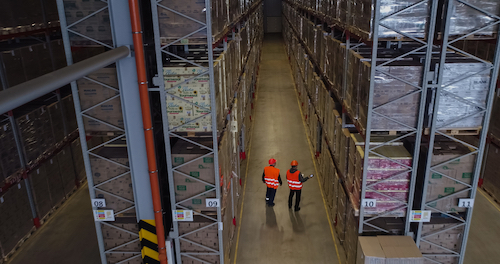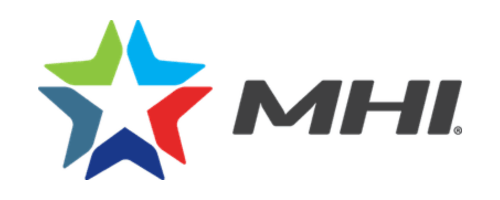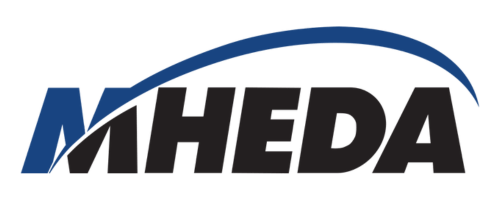Warehouse fires can cause devastating losses, including significant property damage, injuries, and lost productivity. Warehouse fires are more common than ever in the United States, with around 1,508 incidents each year, which necessitates fire safety in warehouses. A well-designed warehouse fire sprinkler system helps mitigate these risks.
Pallet rack sprinklers, also called in-rack sprinklers, can contain fires before they spread, thus protecting employees and inventory. However, because they are placed in high-traffic zones of the warehouse, where forklifts operate, these fire suppression systems are at risk of accidental damage.
So, even though in-rack sprinklers are essential safety measures, a single malfunctioning unit can compromise the entire system, leading to costly repairs and potential fire hazards.
Protection of these critical components requires proactive strategic planning, regular maintenance, and effective safety measures. Below, we explore five best tips to protect pallet rack sprinklers from forklift damage that businesses can implement while adhering to warehouse fire safety regulations.
In-Rack Sprinkler Systems
Sprinklers installed on pallet shelving can prevent fires from spreading. They help address fires at their point of origin and proactively reduce significant losses. The primary types of in-rack sprinkler systems include:
- Wet Pipe Systems: These are like a repository. Herein, the pipes are always filled with water. Wet pipe systems immediately discharge water in case of emergency. They are ideal for warehouses in climate-controlled environments where freezing temperatures are not a concern.
- Dry pipe systems: These use compressed air or nitrogen in the pipes instead of water. Once the sprinkler is activated, the air is released, allowing water to flow into the pipes. Dry pipe systems are best suited for cold storage areas.
- Pre-action Systems: These hybrid systems are activated by a warehouse sprinkler system to release water and a fire detection system. This lessens the possibility of an unintentional discharge, which often happens in the two systems mentioned above. It is used in high-value inventory storage.
- Deluge Systems: Unlike other sprinkler types, a deluge system keeps its sprinkler heads open. When a fire detection system triggers the control valve, water is released. This system is perfect for high-risk situations of quick fire suppression.
- Foam-Water Systems: These are appropriate for warehouses that store flammable substances. These combine foam concentrate with water to create a fire-suppressing blanket.
Strategies to Prevent In-rack Sprinkler Damage from Forklifts
1) Optimize Sprinkler Placement to Reduce Exposure
This would help minimize exposure to forklifts.
One of the best approaches for warehouses to lower the risk of forklift damage is through strategic positioning. When installing an in-rack system, check the position of the sprinkler heads. Their head should be positioned under upright vertical racks or horizontal beams. This setup will create a natural wall for sprinklers, which helps them withstand minor impacts and deflect any damage from moving machinery.
Furthermore, route the piping network along protected areas, such as behind structural elements or overhead to further reduce the chances of accidental collisions. Speak with fire safety specialists to find the ideal sprinkler placement plan that provides the best fire coverage.
2) Install Protective Cages and Guards Around Sprinkler Heads
A simple yet effective way to protect warehouse fire sprinkler components is by installing steel cages or guards around the sprinkler heads. By creating a shield around sprinklers, they prevent them from coming into direct contact with forklifts or falling items.
When installing sprinkler cages, consider the following:
- Use tough steel or reinforced materials that can withstand impact.
- Paint the sprinkler cages with high-visibility colors to alert forklift operators.
- Care that the cages do not block water flow when sprinklers activate.
Sprinkler head guards are an option for an extra line of protection. They can be installed on piping and sprinkler heads. These protective components offer added protection and help prevent costly repairs and system downtime brought on by accidental collisions.
3) Focusing on Forklift Operator Training
One of the reasons for forklift-related damage in warehouses is human error. Accidents and damage can be reduced by training forklift operators on pallet rack safety guidelines and the importance of avoiding sprinkler system components.
The following are the best practices for training forklift operators:
- Educating operators about the results of sprinkler damage on business operations and finances.
- Conducting regular safety workshops with a focus on raising awareness of fire safety.
- Implementing clear signage to identify high-risk areas and sprinkler placements.
- Encouraging slow, careful movement in narrow aisles and storage racks.
- Highlighting how crucial it is to use safe load-handling practices to prevent pallets from moving and hitting sprinkler pipes.
Regular refresher courses can foster a culture of safety and awareness while reinforcing these best practices. This way, businesses can minimize the risk of damage and promote a safety culture in the warehouse.
4) Performing Routine Inspections and Maintenance
Regular inspections can help confine possible hazards before they become serious problems. Warehouse managers should establish a schedule for inspecting sprinkler heads, pipes, and surrounding areas to look for signs of wear, leaks, or damage caused by forklifts.
A warehouse fire sprinkler system and its maintenance plan should include:
- Weekly visual inspections: To identify visual damage or obstructions affecting in-rack sprinklers or pipes.
- Perform monthly functionality tests: To ensure all system components are working as intended. Check whether pallet racks are structurally sound and configured to support the sprinkler system.
- Annual professional evaluations: By fire safety specialists to confirm compliance with regulations.
- Immediate repairs or replacements: For any compromised sprinkler heads or pipes.
Adhering to sprinkler system maintenance guidelines ensures compliance with fire safety regulations while preventing costly damages and operational delays. By taking proactive measures, warehouses can prevent small problems from escalating into expensive system failures or fire safety violations.
5) Adding Fire Baffles for Additional Safety
Fire baffles can be used with in-rack sprinklers or as an alternative option.
Integrating fire baffles with in-rack sprinklers can improve warehouse fire safety, save valuable assets, and add a line of defense to warehouse storage facilities.
Fire baffles are metal or fire-resistant panels strategically placed in warehouses to contain heat and direct it toward sprinkler heads, thus helping improve fire suppression effectiveness.
These barriers are cost-effective. As a result, in some cases, fire baffles can be used as an alternative or complement to in-rack sprinklers in certain warehouse configurations and inventory combustibility.
However, businesses should adhere to the National Fire Protection Association (NFPA) requirements to determine whether their warehouse can work with baffles alone or needs an additional in-rack sprinkler system.
When installing fire baffles, consider these:
- a) Maintain the right spacing to keep sprinkler coverage unhindered.
- b) Follow NFPA guidelines for flue space, rack depth, and separation barriers. According to NFPA guidelines, fire baffles can replace in-rack sprinklers if specific criteria are met, including:
- Keeping transverse flues 6 inches apart every 5 feet
- Rack depth restriction of 20 feet
- Maintaining a 3-foot 6-inch longitudinal flue gap for rack separation every 20 feet
- Putting up a vertical barrier behind the rack every 20 feet
- c) Conduct routine inspections to confirm that baffles remain securely installed and free of obstructions.
Minimize Risks, Maximize Protection Proactively
A well-maintained sprinkler system for a warehouse is like an investment towards safety and business continuity. Practice proactiveness with these tips to ensure your pallet rack sprinklers remain protected and your fire suppression system is fully functional.
To minimize the risk of damage from forklifts or other sources, optimize sprinkler placement, install protective barriers, provide thorough forklift operator training, conduct routine inspections, and incorporate fire baffles where necessary.
While implementing preventative safeguards and strictly following industry benchmarks for pallet rack safety and national fire protection regulations might necessitate an upfront dedication of financial resources and consistent effort, the long-term benefits are substantial. This approach ultimately translates to significant cost savings and reduced labor requirements by effectively avoiding expensive repair work, keeping operational interruptions to a minimum, and, above all else, protecting lives and assets.
Consider our wide range of system capacities and customizable modular systems to ensure optimal storage configuration within your warehouse. From storage shelves for small components to industrial pallet rack systems for larger, heavier loads, the SRSI team can help design the best solution for your operation. Contact us for design ideas and helpful accessories.
Frequently Asked Questions
1) What are the common causes of in-rack sprinkler damage?
The most common causes include accidental collisions with forklifts, often due to narrow warehouse aisles. Improper warehouse layout can increase the impact risk on sprinklers. Additionally, falling inventory, such as improperly stacked pallets or shifting goods, can strike the sprinkler heads. A lack of protective barriers around sprinklers further exposes them to physical damage.
2) Can protective cages interfere with sprinkler function?
No, if properly designed and installed. Protective cages should be made of durable materials and positioned to shield sprinkler heads without obstructing water flow during activation.
3) Are fire baffles always required with in-rack sprinklers?
Fire baffles can enhance fire suppression effectiveness but may not always be required. Their necessity depends on warehouse design, flue space regulations, and NFPA compliance. In some cases, fire baffles might be utilized to enhance system performance, but their use should always align with fire safety standards and best practices for the specific storage environment.
4) What regulations govern in-rack sprinkler installation?
In-rack sprinklers must comply with National Fire Protection Association (NFPA) standards, such as NFPA 13, which outlines design, installation, spacing, and water flow requirements. These regulations ensure that sprinklers provide adequate fire protection by considering factors like storage type, ceiling height, and warehouse layout.
5) What is the difference between in-rack and ceiling-mounted sprinklers?
In-rack sprinklers are installed directly within storage racks for targeted fire suppression at the ignition source and are suitable for high-density storage areas. Ceiling-mounted sprinklers, on the other hand, are positioned at the warehouse ceiling to provide broader coverage and are designed to suppress fires that spread across open spaces.
 Skip to main content
Skip to main content

